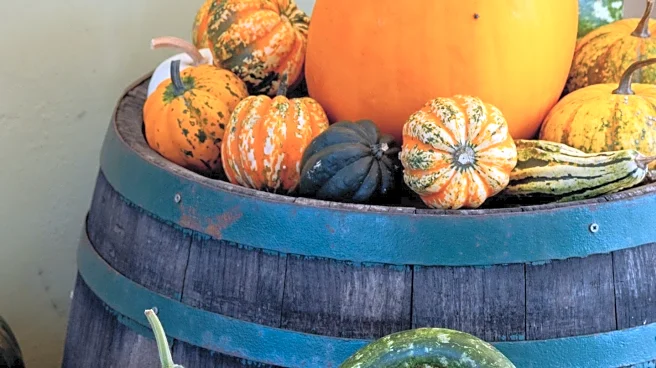What's Happening?
Halloween, a popular holiday among children, presents unique challenges for those with disabilities. According to the U.S. Centers for Disease Control and Prevention, around 17% of children between ages 3 and 17 have a developmental disability. To make
Halloween more inclusive, families are encouraged to make adjustments such as moving treat bowls closer to street level for accessibility, toning down spooky decorations to accommodate sensory sensitivities, and offering non-candy treats for children with food allergies. The Teal Pumpkin Project promotes allergy-friendly alternatives, while the blue pumpkin symbol raises awareness for children with autism spectrum disorder.
Why It's Important?
These adaptations are crucial for ensuring that all children, regardless of their physical, sensory, or communication needs, can participate in Halloween festivities. By creating a more inclusive environment, families can help children with disabilities enjoy the holiday without feeling excluded or overwhelmed. This approach not only enhances the experience for children with disabilities but also fosters a more understanding and accommodating community. The initiative highlights the importance of inclusivity in public celebrations and encourages broader societal awareness and acceptance.
What's Next?
As awareness grows, more households may participate in initiatives like the Teal Pumpkin Project, offering allergy-friendly treats and recognizing symbols like the blue pumpkin to support children with autism. Community engagement and education on inclusivity can lead to more widespread adoption of these practices, potentially influencing other public events and holidays. Continued advocacy and support from organizations can further promote inclusivity, ensuring that children with disabilities have equal opportunities to enjoy celebrations.
Beyond the Headlines
The movement towards inclusivity in Halloween celebrations reflects broader societal shifts towards accommodating diverse needs. It raises ethical considerations about accessibility and the importance of creating environments where all individuals feel welcome. Long-term, these efforts could influence public policy and community planning, encouraging more inclusive practices in various aspects of life beyond holidays.













